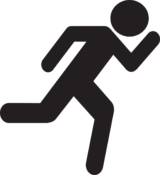Achieving Full Range of Motion: Exercises for Recovery
Recovering from an injury or surgery can be a challenging journey. Whether you’re an athlete, a fitness enthusiast, or simply someone looking to regain mobility, achieving a full range of motion is crucial. In this blog post, we’ll explore various exercises that can aid in your recovery process, helping you get back to your best self. Let’s dive in! 🚀
Table of Contents
1. Understanding Range of Motion
2. Benefits of Full Range of Motion 🌟
3. Essential Exercises for Recovery 🏋️♀️
– Stretching Exercises
– Strengthening Exercises
– Balance and Coordination Exercises
4. Tips for a Successful Recovery Journey 🏆
5. Conclusion
6. FAQs
Understanding Range of Motion
Before we jump into exercises, let’s quickly understand what “range of motion” means. Essentially, it’s the measure of movement around a joint. Optimal range of motion is vital for performing daily activities and maintaining an active lifestyle. When it’s limited, due to injuries or other factors, it can lead to discomfort and restricted mobility.
Benefits of Full Range of Motion 🌟
Gaining a full range of motion isn’t just about flexibility. Here are some key benefits:
1. Enhanced Performance: Whether you’re lifting weights or playing sports, full range of motion can improve your performance by allowing more efficient movement.
2. Injury Prevention: A restored range of motion reduces the risk of future injuries, as joints and muscles work harmoniously.
3. Pain Reduction: Many people experience reduced pain as they regain their full range of motion.
Essential Exercises for Recovery 🏋️♀️
Stretching Exercises
Stretching is a fundamental component of recovery. Here are a few to consider:
1. Hamstring Stretch: Sit on the floor with one leg extended and the other bent. Reach towards your toes to stretch the hamstring. Hold for 20-30 seconds.
2. Shoulder Stretch: Gently pull one arm across your chest and hold for 15-20 seconds. Switch arms.
Strengthening Exercises
Building strength in the affected area can significantly aid in recovery:
1. Wall Push-Ups: Stand facing a wall, arms extended. Slowly perform push-ups against the wall, engaging your core.
2. Leg Raises: Lie on your back and lift your legs, keeping them straight. Hold for a few seconds and then lower them slowly.
Balance and Coordination Exercises
Improving balance and coordination helps in preventing falls and further injuries:
1. Single-Leg Stands: Stand on one leg for 30 seconds, then switch. Use a chair for support if needed.
2. Heel-to-Toe Walk: Walk in a straight line, placing the heel of one foot directly in front of the toes of the other. This can enhance balance over time.
Tips for a Successful Recovery Journey 🏆
Recovery is a personal journey, and it’s important to listen to your body. Here are some tips:
1. Consistency is Key: Regular practice of these exercises will yield the best results.
2. Stay Hydrated: Water aids in muscle recovery and overall health.
3. Rest and Recover: Give your body the time it needs to heal between workouts.
Conclusion
Achieving a full range of motion is a rewarding goal that can significantly improve your quality of life. By incorporating these exercises into your routine and following the tips provided, you’ll be on the path to a successful recovery. Remember, patience and persistence are your best allies in this journey. 💪
FAQs
1. How often should I perform these exercises?
Ideally, aim for at least 3-4 times a week, but always listen to your body’s signals.
2. Can I do these exercises at home?
Absolutely! Most of these exercises require minimal equipment and can easily be done at home.
3. What if I feel pain during an exercise?
If you experience pain, stop immediately and consult with a healthcare professional to ensure you’re not exacerbating an injury.
4. How long does it take to see improvement?
Improvements can vary, but many people start noticing changes within a few weeks with consistent practice.
5. Should I consult a professional before starting these exercises?
It’s always wise to consult a physical therapist or healthcare provider, especially if you’re recovering from surgery or a significant injury.
